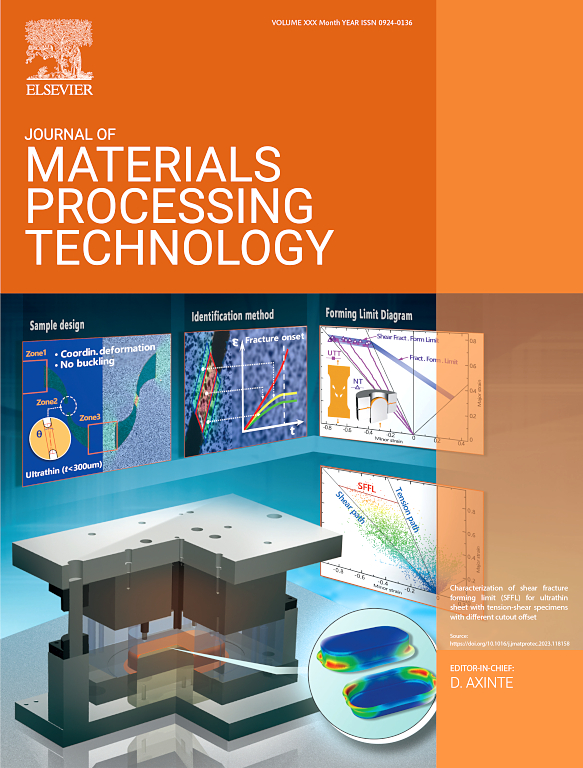Coordinated deformation characteristics and its effect on microstructure evolution of LA103Z Mg-Li alloy in reciprocating rotary extrusion
Abstract
The uneven metal flow and inhomogeneous microstructure on the cross-section of the extruded bar are mainly induced by the uncoordinated deformation during the traditional extrusion process, which seriously restricts its production and application. These defects are more prominent for the dual-phase Mg-Li alloy due to the phase transformation and the difference in flow between soft and hard phases. In order to solve the uncoordinated deformation in traditional extrusion, the reciprocating rotary extrusion (R-RE) process based on harmonic oscillation of die is proposed. The experiment and numerical simulations of the reciprocating rotary extrusion process were carried out at rotating frequency of 2.5 and 5 Hz, extrusion velocity of 1 mm/s, forming temperature of 290℃, die extrusion ratio of 12 and die rotating angle of ±6°. The coordinated deformation mechanism from macroscopical flow and microstructure in reciprocating rotary extrusion was investigated deeply. Meanwhile, a novel theoretical method was proposed to describe coordinate deformation characteristics quantitatively. The results indicated that the reciprocating rotary extrusion significantly reduces the forming load and accumulates more strain. The more uniform metal flow contributes to coordinated deformation. The extrusion deformation factors are proposed to reveal the coordinated deformation mechanism. In addition, the deformation body characteristic zone is novelly divided into six zones by combination of flow pattern and microstructure evolution.

 求助内容:
求助内容: 应助结果提醒方式:
应助结果提醒方式:


